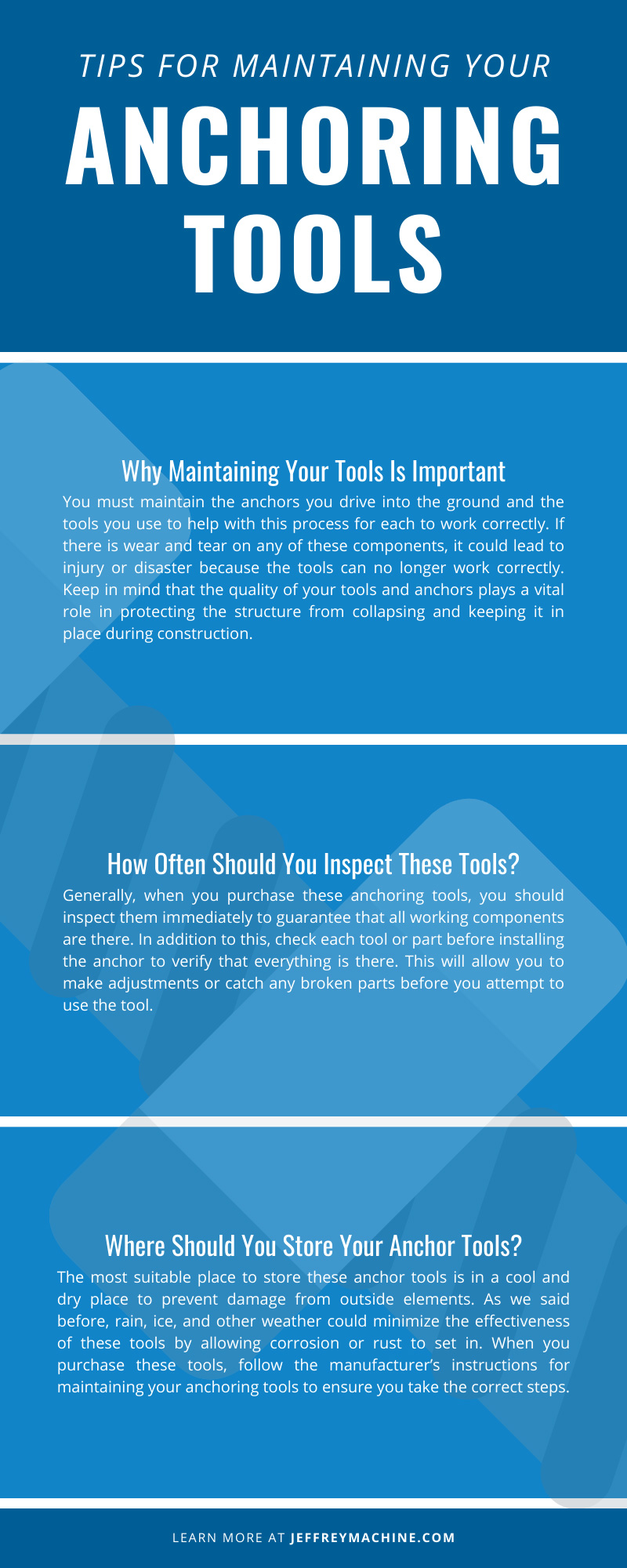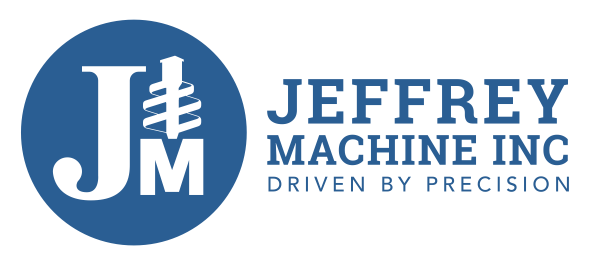Tips for Maintaining Your Anchoring Tools
-1140x300w.jpg)
When you’re building a foundation for a construction project, the foundation type, soil, and location of the structure may require you to use a component called an anchor. These anchors go into the ground to secure and protect a foundation from damage and to keep the crew safe while they maneuver around the work site. Maintaining your anchoring tools is essential to ensuring they perform to the best of their ability.
In this article, Jeffrey Machine discusses how you can take proper care of the anchor tools you can purchase from us. If you neglect this essential practice, you could ruin a foundation or project because the tools are not up to standard. Continue reading to become familiar with the best techniques for inspecting and maintaining your tools.
Why Maintaining Your Tools Is Important
You must maintain the anchors you drive into the ground and the tools you use to help with this process for each to work correctly. If there is wear and tear on any of these components, it could lead to injury or disaster because the tools can no longer work correctly. Keep in mind that the quality of your tools and anchors plays a vital role in protecting the structure from collapsing and keeping it in place during construction.
Bolt Circle Kelly Bar Adapter
The bolt circle Kelly bar adapter is highly versatile and can work with various other tools to install anchors. To maintain this kind of tool, you must use it correctly and avoid damage. Choosing the wrong measurements and torque output could harm the longevity of this anchoring tool or damage it to the point where you cannot use the adapter anymore.
If you need to replace any parts, ensure you are doing this with the same grade and size as the original component. Never try to force an anchor to work with a broken part because you could damage your auger or the Kelly bar adapter.
Standard Locking Dog Assembly
One of the main components of a complete system for anchoring is the standard locking dog assembly. When it comes to this tool, the screws which you use to secure the locking dogs can become loose. If this occurs, you may need to clean the threads on the hardware before you can properly tighten the screws onto the assembly.
To ensure this anchor tool is in working condition, check that the wrench drive and anchor rod fit into the assembly so that the anchor can operate more smoothly. While any tool will experience wear and tear after many uses, it’s essential to use these tools appropriately to maintain them.
Helical Pier Anchors
The more heavy-duty anchors, helical piers, are critical to maintain. These parts are especially crucial because their primary function is to secure and support foundations at a deeper depth, typically on unstable ground. Usually, these anchors stay in the ground and will remain in place after the construction project is complete. Because of this, it’s essential to keep these anchors in prime condition, or it could harm or threaten the strength of the part.
Avoid leaving any of these anchoring tools out in the elements, or you could risk rust or corrosion. Keep them dry by placing them in an enclosed area. You also want to double-check that all working parts are in order and on the anchor before placing them in the ground.
Torque Indicators & Wrenches
Torque indicators are a great resource to have when using anchoring tools because they act as a quality control device that helps you test and calibrate torque control tools. You must inspect these indicators for them to work correctly in your system.
As for the actual wrenches you use to add torque to your anchoring assembly, it is vital that you keep them maintained so that they can perform their task properly. You may need to disassemble the components to check each individual working part for wear. Without routine maintenance, this tool may not work correctly.
Retaining Pins
Retaining pins are essential for holding specific components together on your anchoring system. If this pin does not have a positive connection at either end, it could eject and harm the operator as they install the anchor. Double-check that these pins are in the correct place before using the anchor.
Damage to any retaining pins will fail your anchoring system, so you must inspect and replace them when necessary. Bolts should be tight on the tool, and pins must be in place before you can begin the process of driving the anchor into the ground.
How Often Should You Inspect These Tools?
Generally, when you purchase these anchoring tools, you should inspect them immediately to guarantee that all working components are there. In addition to this, check each tool or part before installing the anchor to verify that everything is there. This will allow you to make adjustments or catch any broken parts before you attempt to use the tool.
Where Should You Store Your Anchor Tools?
The most suitable place to store these anchor tools is in a cool and dry place to prevent damage from outside elements. As we said before, rain, ice, and other weather could minimize the effectiveness of these tools by allowing corrosion or rust to set in. When you purchase these tools, follow the manufacturer’s instructions for maintaining your anchoring tools to ensure you take the correct steps.
Jeffrey Machine has a variety of tools available on our website. Browse through our selections and contact us with any questions or concerns so that you can find the right system for your project.

